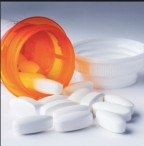Attention Deficit Hyperactivity Disorder (ADHD) is a childhood disorder characterized by inattention, hyperactivity, and/or impulsivity. Estimates of prevalence range from 5-8%, with a male to female predominance of 3-4:1. Treatment of ADHD, or rather the necessity of treatment, has been quite a controversial topic in psychiatric literature. Because of this, many studies have been conducted to evaluate the efficacy of pharmacotherapy as a treatment modality.
One such is the ADHD landmark study, Multimodal Treatment Study of ADHD (MTA), which divided 597 participants diagnosed with ADHD, combined type into 1 of 4 groups:
1.) Intensive medication management alone (methylphenidate)
2.) Intensive behavioral treatment alone
3.) A combination of both
4.) Routine community care.
Results of the MTA study indicate that the children, ages 7-9 years, who were part of the medication group and combination treatment group, had a significant reduction in ADHD symptoms when compared to those in the behavior treatment and community care groups. In this manner, MTA supported the use of stimulants in the treatment of ADHD.
Current practice employs that stimulants, which affect dopamine and norepinephrine, are the first line treatment for ADHD in children. There are three sub-categories within the stimulant class of medications:
1.) Methylphenidate (Concerta, Ritalin, Methylin, Metadate, Focalin, Daytrana)
2.) Dextroamphetamine (Dexedrine, Vyvanse)
3.) Mixed amphetamine salts (Adderall XR, Adderall).
Common side effects of these medications include insomnia/sleep disturbances, appetite suppression/weight loss, stomachache, headache, mood lability/irritability, social withdrawal, increased heart rate and blood pressure. It is also important to be cautious about using stimulants in patients who have any history of psychosis, bipolar disorder, and/or tic disorder, as these pharmacologic agents may exacerbate psychotic symptoms, mania, and/or tics. Lastly, it is crucial to screen for a family history of cardiac disease prior to initiating therapy (arrhythmias, sudden death, syncope, etc.); however, it is not necessary to obtain a baseline EKG.
In addition to the stimulants, there are several non-stimulant medications that can be used to treat ADHD in children. One such includes atomoxetine (Strattera), a selective norepinephrine reuptake inhibitor. Important side effects of atomoxetine include: gastrointestinal distress, sedation, decreased appetite, suicidal thinking, liver injury, worsening of tics, cardiovascular events. Other non-stimulant medication classes used to treat ADHD involve TCAs and buproprion. TCAs are known to have adverse cardiac and anticholinergic effects, while buproprion can lower the seizure threshold and exacerbate tics. Finally, alpha-adrenergic agonists, such as guanfacine and clonidine, are FDA approved to treat ADHD in children. With these medications, it is important to monitor for hypotension, rebound hypertension, sedation, bradycardia, headache, and abdominal pain.
As with all childhood disorders, the choice of agent for treatment should be made on a case-by-case basis, only after a comprehensive evaluation has been completed, which takes into consideration factors such as patient/parent/teacher reports, rating scales, medical history, family history, previous psychiatric history, medication allergies, psychosocial history, substance use, and developmental history.
